







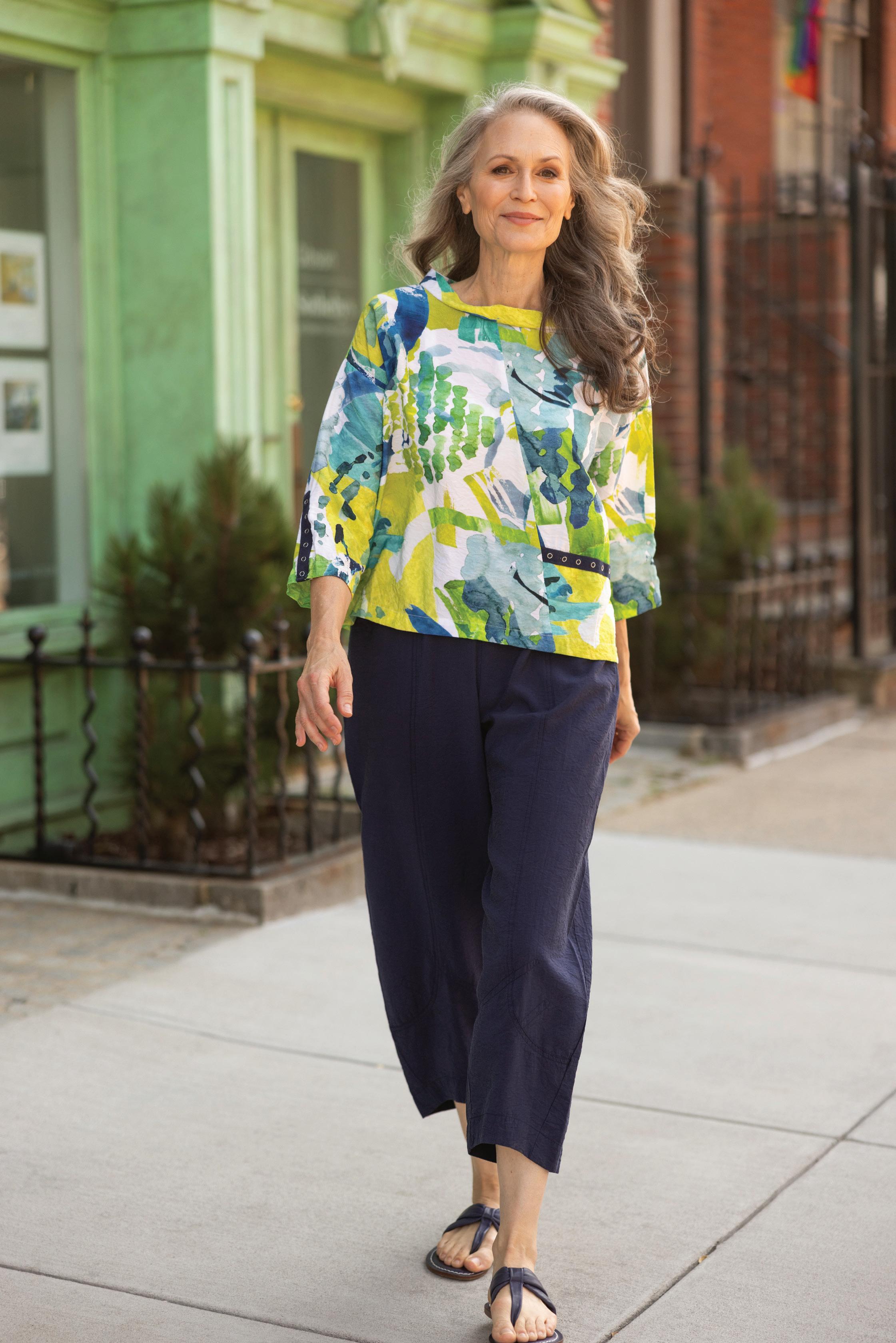












It’s July, when both fireworks and the Blue Angels light up our skies. Yay, summer! Maybe it’s a good time to think about how to light up our lives as well.

I’ve been thinking lately about longevity (#goals) and how to keep a long life interesting.
According to the article “Are you curious? It might help you stay sharp as you age” from the UCLA newsroom website, new research shows that overall curiosity can grow “well into old age.” One of the researchers noted that, “…as we get older, we don’t want to stop learning, we’re just more selective about what we want to learn.” And that brings me to the question: What do I want to learn? I want to travel more and learn more about the history and culture of the world. I want to soak up more art (painting, sculpture, music, theatre — I love it all).
But I also want to learn how to propagate my favorite plants from cuttings, how to bake sourdough bread and how to do my own repair/ building projects around the house. In fact, the list of what I want to know grows daily (and always has), much like my lists of books to read and movies to watch.
So much to learn, so little time! Just thinking about what I long to know fires up my synapses. For me, it’s not that there’s a dearth of ideas to keep me curious; it’s that there are so many I can’t seem to focus on one. Maybe what I need is a Masterclass on focus and productivity.
This month, though, I’m looking forward to almost nonstop company, cookouts, boat rides and fun, so I don’t imagine I’ll be worrying about productivity or learning much new.
Annual July traditions fire me up, and I hope they spark your joy as well. Light it up, Bellas!
Do you enjoy Bella? Would you like to share your thoughts? Feel free to reach out to me anytime at lisa@bellamagazine.com.





PUBLISHER / Kelly MacLeod
EDITOR / Lisa Player
ART DIRECTOR / Elizabeth Meyer
CONTRIBUTING WRITERS
Liz Biggs, Sharla Gorder, Alice Crann Good, Allison McCrory, Chelsea Owens, Leslie Peck, Cynthia Reeves, Justine Williams Roper, Magi Thomley Williams
CONTRIBUTING PHOTOGRAPHERS
Toni Sparks, Kate Treick
OR CALL (833) 358-4486









Liz Biggs, writer/columnist
Liz Biggs is a Pensacola native and mother of four. Once upon a time, she had a high-pressure career, but now she has a pension and is a freelance writer for Bella Magazine. Liz enjoys music, dancing, tennis and travel and tries to find humor in everything.
Kristin Holifield Cagle, advertising
Kristin Holifield Cagle is a fifth-generation Pensacola native who loves to help women and business owners alike achieve their goals. With a master’s degree from the University of West Florida, she specializes in marketing. She is the mother of two and enjoys soaking up the sun at the beach and spending time with family in her spare time.
Julie Duvall, advertising
Julie Duvall is a native of Southeast Texas and has worked in Washington, DC and Arkansas in commercial real estate, politics and executive administration positions. She has proudly called Pensacola home since 2020 and enjoys her sailboat, spoiled dogs and regional philanthropy.
Alice Crann Good, writer
Award-winning writer Alice Crann Good spent 20 years with USA TODAY and Pensacola News Journal; accolades include the Scripps Howard Foundation National Journalism Award. She was also a state college PR specialist and is author of Betsy the Bookworm children’s book series.
Sharla Gorder, writer/columnist
Sharla Dawn Gorder is a Pensacola Beach resident and columnist for the Island Times newspaper. She is the author of “My Vices Collide; a Celebration of Being a Little Messed Up,” and “Crayon Dawn,” a coffee table book sold in stores throughout the Pensacola area and at her website, crayondawn.com.
Jennifer Harrison, advertising
Jennifer Harrison is a Pensacola native (via the Navy). She is involved in the Pensacola community through IMPACT 100, Pensacola Navy Days, charitable food distributions, Leadership Pensacola, ECPS Foundation, Achieve Escambia, ECCPTA and more.
Allison McCrory, writer/fashion stylist
Allison McCrory is almost a Pensacola native who has worked in writing and editing since 1984 when she started with The News, an afternoon newspaper that later merged with the morning Journal. The mom of two adult kids, Allison suffers from a tennis addiction, practices yoga and loves to cook.
Elizabeth Meyer, art director
Elizabeth Meyer spent her early career as a designer and design director at newspapers across the country. She is currently an adjunct instructor and director of The McKinley Avenue Agency at Ball State University. Betsy was born in Pensacola while her father was in the U.S. Navy.
Chelsea Owens, writer
Chelsea Owens grew up in Gulf Breeze and received degrees in communications and art from the University of West Florida. She has a lifelong passion for style and art, and over 10 years of social media and marketing experience. She is also a pilates instructor who enjoys both staying busy and relaxing at the beach.








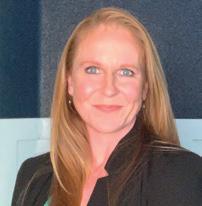
Cynthia Reeves, writer
Long-time writer Cynthia Reeves spent 25 years as a broadcast journalist across the southeast, including 10 years as a news reporter at WEAR-TV in Pensacola. As a high school teacher of journalism, TV production and English, she passed her skills down to young writers. She also served several years as District 1 director for the Florida Scholastic Press Association.
Justine Williams Roper, writer
Justine Williams Roper is a doctor of physical therapy, personal trainer, and speaker from Pensacola. She has written women's health articles for publications like Essence and enjoys all things movement and food. She is the proud owner of InHer Physique Pelvic Floor Therapy & Wellness, where her passion for women’s health truly shines.
Leslie Peck, writer/beauty expert
Leslie Peck is a local aesthetician, makeup artist, lash artist and brow specialist. She has experience in TV, film, print and celebrity makeup in Los Angeles and 11 seasons of NYC Fashion week. Leslie was featured on the front page of the Wall Street Journal in 2007 for her work at Fashion Week.
Leah Seacrest, writer/fitness expert
Leah Seacrest, a seasoned fitness industry veteran with over 30 years, experience in group fitness and personal training, co-owns REGYMEN Fitness Pensacola and is the SVP of REGYMEN Fitness overseeing operations and franchise growth. She is a mother of three and loves spending time outdoors.
Sonshine, writer
Sonshine is a Northwest Florida media personality, currenting hosting “Sonshine’s Corner” on BLAB TV. She is a business consultant, author, motivational speaker and fitness consultant. Sonshinemoorer@gmail.com.
Toni Sparks, photographer
Toni Sparks is a proud Pensacola native. As the visionary behind Short Story Studios, Toni is dedicated to creating magazine-quality images with elegance and style. Her experiences infuse her photography with a unique perspective that celebrates and elevates every moment.
Kate Treick, photographer
Kate Treick is a professional photographer, writer, speaker and publisher who has called Pensacola home since 2012. She and her husband, Joel, have two teenaged kids and two funny little dogs. Kate loves spending time with friends, leading music at her church, reading and traveling. kate@katetreickphotography.com
Magi Thomley Williams, advertising/writer
Magi Thomley Williams, ACB, ALB is a business and nonprofit consultant, writer, trainer and speaker. Dedicated to improving her community by helping nonprofits build their boards, improve their media presence and attract donor funding, Magi enjoys writing about impactful nonprofits, thriving businesses and the women who lead them. Magi@ThomleyConsulting.com.
Teresa Torres Zwierzchowski, social media
Teresa Zwierzchowski has more than 20 years’ experience in communications, including more than 15 working for the Pensacola News Journal. She is a lover of all things communication including brand, culture, social media as well as community and public relations.









BY
• Liv Foster Kaia beaded mirror mini dress, $395, neimanmarcus.com
• Christian Dior foldable hand fan, $395, therealreal.com
• Emme Parsons Laurie flat, $425, fwrd.com




• Sequin mini dress, $69.90, zara.com
• Scalloped-edge fan, $9.99, hm.com
• Faux leather strappy toe ring sandals, $24.99, oldnavy.com


H&M: Cordova Mall, 5100 N. Ninth Ave., Pensacola; 855-466-7467; hm.com
Old Navy: Cordova Mall, 5100 N. Ninth Ave., Pensacola; 850-475-1302; oldnavy.gap.com



By Allison McCrory
If you’re looking for one new summer 2025 staple, make it a pretty, flowy dress, advised Pensacola SoBo Boutique owner Alicia Taylor-Prinz.
“They can be dressed up or down,” she said. “Prints such as gingham and stripes are always perfect for summer. I also love the drop waist and basque style waistline on maxi and short dresses. That’s huge right now.”
Choose your favorite length — minis, midis and maxis are all showing up on runways. Soft hues like sky blue, powder pink and butter yellow are trending. But so are rich brown, burgundy and green.
“Denim is also big for summer, and you will see barrel jeans are here to stay,” noted Taylor-Prinz.
But also look for skirts, longer shorts and rompers in denim.
To polish off your summer style, consider charms!
“All things charms are in,” said TaylorPrinz. “Charm necklaces are big right now and now they are big for other accessories too. People are putting charms on their shoe laces and making charm straps to add on top of their handbags.”
Shopping list: Star in your own summer story in this feminine butter yellow mini dress by Franchise, $92. Add a hair bow for extra whimsy!


Pensacola native Dillian Morgan is motivated by being a change-maker. Whether it’s caring for patients in need or resonating with followers as a content creator, making an impact lights up her life.
Currently a full-time nursing student at UWF, Morgan worked for three years as a chiropractic assistant as well as a patient care technician at Baptist Hospital, with other jobs scattered in. Caring for and motivating others is in her DNA.
“My biggest motivator, aside from my support from family and friends, is the fact that I physically see the impacts I can make on people. From patients in the hospital or my followers on my platform, I am deeply motivated by the impacts I am making. Seeing this motivates me to keep going and follow my dreams.”
Escaping to the coast and moving her body round out Morgan’s full life.
“In the remainder of my free time I love going to the beach and basking in the sun, and I enjoy Pilates as a way of getting my body moving,” said the West Florida High graduate.



Shopping list: “Barrel jeans are here to stay,” reported Alicia Taylor-Prinz of SoBo Boutique. Here they show up in a light wash, $86, by Miou Muse. Team with a cool eyelet top, $58, also by Miou Muse. The neutral duo is a canvas ripe for fun accessories.
About the location
Pensacola Little Theatre 400 S. Jefferson St., Pensacola; 850-432-2042; pensacolalittletheatre.com
Clothes compliments of SoBo Boutique 512 N. 9th Ave., Pensacola; 850-434-0258; thesoboboutique.com
Light-up letters compliments of Light Bright Events 407-408-1359; lightbrightevents.com
Model compliments of Izon Models & Talent LLC 301 N. Barcelona St., Suite E, Pensacola; 850-433-2099; izonmodels.com
Photography: Kate Treick / Fashion styling: Allison McCrory
Where to shop: SoBo Boutique






















Story by Leslie Peck / Photo by Getty Images
If your go-to makeup look is no makeup, this is your season! Sorry to report, this doesn’t mean there isn’t makeup involved; however, less than usual will keep things light and airy during the dog days of summer.
The key to great-looking skin is a consistent skincare regimen. Regular exfoliation and hydration will keep your skin healthy, glowing and looking its best.
Two hot trends this summer are bright, colorful blush and a pop of color on the lip. Don’t overdo it with the bronzer this season. Your sun-kissed skin will do the job. Think more along the lines of a bright berry palette to accentuate your look.
Prep the skin with moisturizer and SPF — preferably one with a luminous glow. Lightly even out the skin with a touch of concealer, tinted moisturizer, BB cream or mineral foundation.
Accentuate the cheekbone with a bright coral or pink blush. Stay on the cheekbone to guide placement. Use a medium size brush when applying blush.
Especially if you have petite features. If your skin is on the dry side, use a cream blush for added hydration. You can apply cream blush by tapping the pigment on with your fingers, but always buff it out with a brush to blend it into the skin.
There are so many choices when it comes to lips. This summer, think bold, dewy and berry-stained. Keep a few choices in your bag to touch up throughout the day. There are many great choices of lip stains, glosses, lipsticks or lip oils. Don’t be afraid to go bold with color! If you want a fuller version of a bright lip, use a lip liner to create a bigger statement. For more of a hint of color, stick with the stains, oils and glosses.
To finish off this quick, no-fuss look, brush the brows in place and finish with a few swipes of mascara on your top and bottom lashes.


By Alice Crann Good / Photos by Kate Treick Photography & Getty Images
If you have ever signed up for a session with a mental health therapist because your positivity crashed and burned, there’s a strong possibility you considered the professional a paragon of perfection who lives a happy-go-lucky life. All positive. No negative.
Well, think again.
Meet two Pensacola Psychology Today-attested professionals who provide a reality check and share what’s in their toolboxes to stay positive: Tiffany Leader, CEO and licensed clinical social worker/ burnout coach at See the Wonder LLC; and Erica L. Mack, state-registered clinical social work intern employed at Greenhouse Counseling Corp. and retired U.S. Navy educator.
“There’s an unspoken expectation from the outside world that we, as therapists, have it all together — as if being a therapist means we’re immune to struggle,” Leader said. “But the truth is we’re human, too. We walk through hard seasons, and we lean on the very tools we offer our clients to find our way through.”
Too true, Mack concurred.
“The myth is we are always happy and that we do everything right,” Mack said. “That is very contrary to the nature of life, and I quite often share that with my clients. I am human, too.”
Recently, she had to take time off work due to a really bad cold.
“But isn’t that what the average person would do? It doesn’t change just because your title is therapist, or you are an intern working in therapy. The narrative doesn’t change for the need of positivity,” Mack said.
Both women generously shared some of their challenging times.
“There’s a term I like to use — superhero
syndrome,” Leader said “If you’re a social worker, a caregiver, a helping professional, or simply someone who feels responsible for everyone and everything, you probably know exactly what I mean. It’s the deeply ingrained belief that we must do it all, fix it all and never drop the ball. I wore that invisible cape for years, driven by a desire to serve with a perfectionist streak a mile wide and a high-achiever mindset that rarely let me rest. But when you’re a high-achieving, highly sensitive person with a tendency to put others first, that cape becomes incredibly heavy.”
She said that over time, burnout became a frequent, unwelcome companion in her life.
“It’s sneaky and unrecognizable until you’re fully engulfed in flames,” Leader explained. “It would sneak up on me in quiet, consistent ways — through weeks of lingering illness I couldn’t shake, gastrointestinal issues tied to chronic stress, and that telltale brain fog that left me feeling detached from everything, including myself. I now know the science behind what was happening.”
But with therapy, creating positive “micro moments,” using the Emotional Freedom technique (EFT tapping), and learning what it truly means to care for herself — nourishing her body, mind, spirit and soul — her life improved.
And a one-size-fits-all solution doesn’t exist, Leader stressed.
She turns to mentors/friends in her career field who teach her how to release emotions; as a faithled person, she prays; and she enjoys her personally selected micro-moments of wellness.
“These moments are small, intentional pauses to reconnect with what I need,” Leader said. “For me, that looks like time in nature, a deep spiritual connection, nourishing conversations with friends
Need a way to reduce stress and negativity? Try the Emotional Freedom Technique, commonly known as EFT tapping.
It’s recommended by Tiffany Leader, CEO and licensed clinical social worker/burnout coach at See the Wonder LLC. She uses the therapy often.
Basically, it’s a technique that involves tapping on specific points of the body while focusing on a negative emotion you want to release.
Leader suggests learning all about the science behind EFT tapping by watching “What is Tapping, and Why Does it Work?”
By Jennifer Partridge on YouTube. You can also check out the life coach/tapping expert at jenniferpartridge.com.
“Recognize the negative, and do not suppress it because it will pop up in different ways. It’s like trying to push a beach ball under water that keeps popping back up. It’s a waste of energy and unhealthy coping mechanism. When we give space to negative emotions, acknowledge and accept them, they can dissipate and give room for joy and positivity to come back.”
— Tiffany Leader, CEO and licensed clinical social worker/burnout coach at See the Wonder LLC
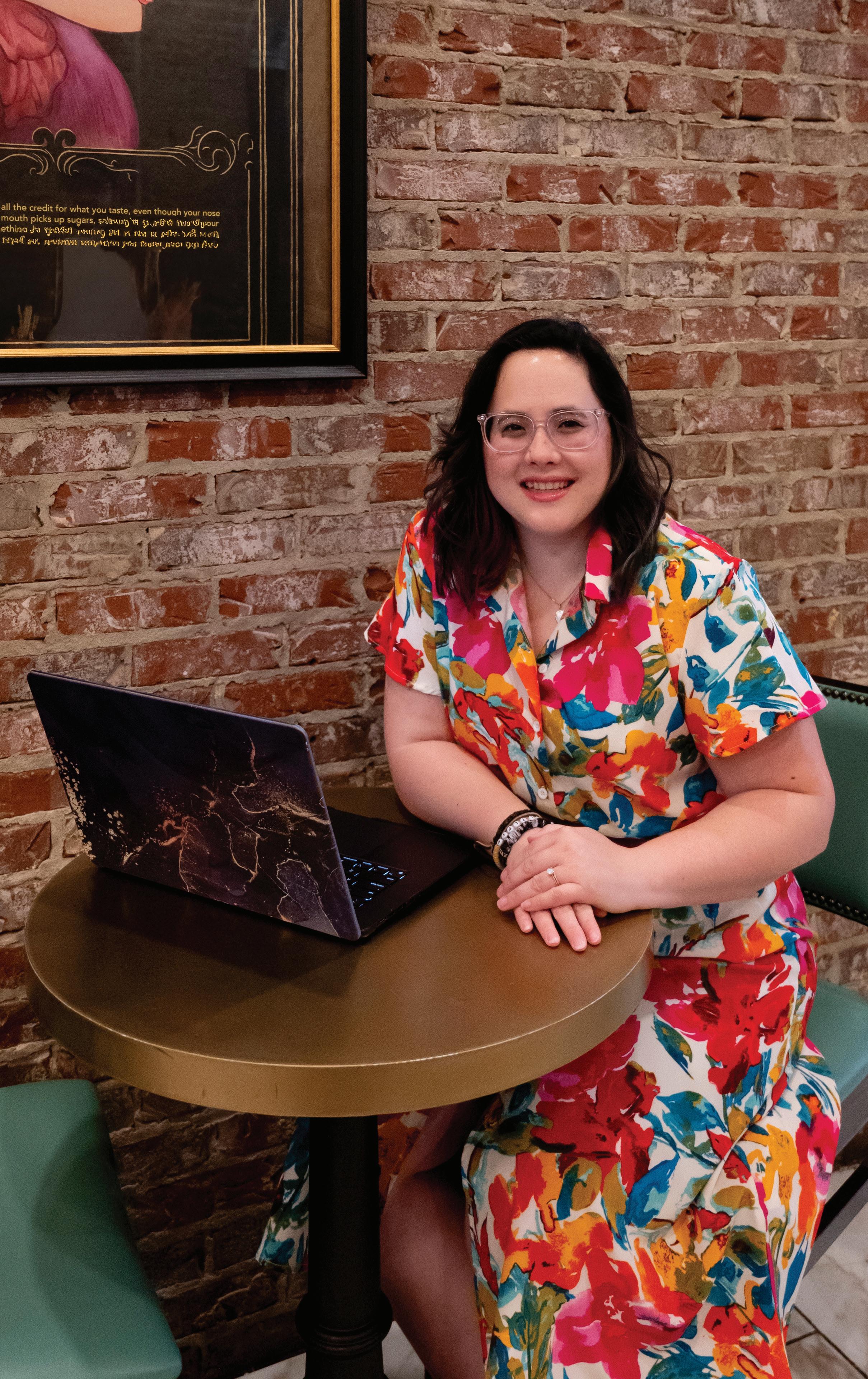
and reminding myself that rest is not a reward, it’s essential. And what helps build up myself and my husband is exploration and adventure. New places and faces build curiosity and help us release stress and let us focus on fun as well.”
The days she pondered leaving her profession entirely and joked about working in a coffee shop just to escape the emotional load are gone.
“Deep down, I still knew I had a calling, still wanted to help women like me — women who love their work, who love their people, but who lost touch with themselves along the way,” Leader said.
“My company is called See the Wonder because I believe the awe and wonder is the beginning of healing, and it was where I started healing from burnout.”
The bottom line is we must redefine what it means to be positive, she said.
“Pop culture says be positive and stay positive all of the time, but reality is that the human experience has a full breadth of emotions that we are supposed to express and feel,” Leader said. “Recognize the negative, and do not suppress it because it will pop up in different ways. It’s like trying to push a beach ball under water that keeps popping back up. It’s a waste of energy and unhealthy coping mechanism. When we give space to negative emotions, acknowledge and accept them, they can dissipate and give room for joy and positivity to come back.”
Mack has literally lived the message on her Psychology Today page: “Life doesn’t come with an instruction manual. It’s packed with ups, downs, and upsidedowns; twists and turns, backward and forward, and even side-to-side.”
The Navy veteran, breast cancer survivor and caregiver knows it takes bravery to fight the negative, even for her.
“I’ve had a lot to deal with,” said Mack, who simultaneously battled cancer and earned her master’s degree in social work, completing the graduate degree program with a 3.57 GPA.
She said it felt like she couldn’t catch a break from life’s fierce fastballs for a long time.
Mack has been the caregiver for her younger brother, who has a mental health illness, for several years now. And when Hurricane Helene ravaged Georgia, Mack’s 84-year-old mother-in-law was forced to leave her Georgia home and move in with Mack and her husband for about six months.
But thanks to her career in mental health

“My self-care includes going to craft shops and fabric shops. But I don’t have to buy anything. It’s just me in the space and how it lifts my spirit and changes my mood.”
— Erica L. Mack, state-registered clinical social work intern employed at Greenhouse Counseling Corp. and retired U.S. Navy educator

and being “a woman of faith,” Mack said she has a plan to regain her positive take on life.
While Mack knows Dr. Google articles galore offer all types of advice on developing and maintaining positivity, she advises not getting caught up in the published to-do lists. For example, most lists suggest surrounding yourself with positive people.
“When you are burnt out, it’s not just about having positive people in your life,” she said. “They must have a positive investment in you and hold you accountable for taking a break. They must be intentional and listen to you, notice something isn’t right and ask, ‘Are you OK?’ It makes a huge difference.”
Mack is onto something. Research states that good friends who are invested in your mental and physical well-being are as important as exercising and healthy eating; plus, they can teach you about yourself and challenge you.
Mack also suggests identifying your “happy peaceful place and doing something different” because physical spaces and places can affect how you feel, think and behave. And it’s different for everyone.
“I have been a seamstress since I was 16 when my aunt taught me how to sew,” Mack said. “My self-care includes going to craft shops and fabric shops. But I don’t have to buy anything. It’s just me in the space and how it lifts my spirit and changes my mood.”
And how about the “doing something different” part?
“I always encourage people to do something different, something they would never think of doing,” she said. “So, in the next couple of weeks I am going to look at RVs. I just want the salesperson to walk me through an RV. And I am going on a helicopter ride over the coast!”
Research shows a correlation between what you are doing and your well-being; increasing your range of activities and places will affect your brain and body in a positive way, causing an upward spiral of positivity, Mack said.
“If we don’t find ways to process what is happening to us, give us moments of positivity and space, it will come out in other ways such as irritability, loss of appetite, frustration, insomnia, etc.,” Mack said.
One last bit of advice from Mack.
“Check on your strong friends,” she suggested. “It’s another misnomer to think just because a friend looks like they are a strong person that they are a strong person. The friend you see as strong may be falling apart.”









By Sharla Gorder / Photos by Kate Treick Photography
Melody Kohr has a motto. It’s as simple as it is profound.
“Every day has a purpose,” she says.
And she should know; Kohr has had more than 8,000 of those purposeful days. After nearly 23 years working her “dream job,” her enthusiasm hasn’t waned. If anything, Kohr is more passionate than ever about the work she does.
Kohr is the Young Adult Service Unit manager in the FamiliesFirst Network of the Department of Child and Family Services. She and her team help teens who have aged out of the foster care system.
In the U.S. each year, more than 20,000 young people turn 18 in foster care and are faced with an uncertain future. If they are not adopted, assigned a legal guardian, or reunited with their birth families, they are, in essence, suddenly on their own at the turn of a calendar page.
That’s where Kohr and her team come in.
“At the heart of our agency’s mission is a deep commitment to empowering youth as they transition into adulthood. We walk alongside young adults on their journey to independence.”
Many of these teens face staggering challenges. Some have been bounced in and out of as many as two dozen homes and facilities in their young lives. Many have strayed into the juvenile justice system. And nearly all of them have faced significant trauma and marginalization.
“It’s a tough transition for them,” Kohr said. “Normal brain development isn’t complete for most adults until the early- to mid-20s. Childhood trauma can further delay the process, affecting executive function, emotional regulation and decision-making skills. At 18, they still have a long way to go. Our goal is to bridge the gap — to help them understand the importance of continued education, meaningful employment, secure and safe housing, and building their future.”
To that end, Kohr and her team provide services, oversight and mentorship to these young people, starting with their most basic need: housing.
It is estimated that as many as 36% of teens aging out of foster care become homeless during the transition to adulthood. Kohr’s team and community

“One of the best feelings for me is when a youth who has been academically behind due to childhood circumstances achieves their high school diploma,” Kohr said.
partners work to keep them safely housed so that they can focus on other foundational aspects of the program: education and employment.
Young people in foster care have often faced disruptions in their education caused by frequent moves. Many, at
18, still have not graduated from high school. Others, who have gotten their diploma, have no means to continue their education or acquire job skills.
The Young Adult Service program offers educational opportunities (tutoring, tuition, even college tours) and

job-skills training to participants.
The goal is to enable these kids to become stable, productive members of our community.
Hundreds of young adults have come through the program since Kohr began working for FamiliesFirst Network in 2002. Many of them thrive. Some do not.
“One has become an actual rocket scientist at NASA. Another is serving a life sentence in prison,” she said.
Kohr learned early on that you can’t take the tragic cases personally, nor can you rest on your laurels with the success stories. There is too much work to be done.
“The job can be stressful,” she admitted. “We deal with so much in a given day, and not just the kids. We are also in constant contact with the courts, attorneys, various social service agencies, community volunteers and advocates … you name it.”
It’s a lot, and Kohr learned early on that she would have to prioritize selfcare to prevent burnout.
“I spend as much time as I can outdoors. I have to be able to move and go, and I encourage my team to do
the same. We often take our lunch or meetings while walking together. Today, my supervisor and I walked the whole Lakeview campus, more than two miles, brainstorming and just talking.”
Kohr has also learned to leave work at work when she clocks out. Her greatest sources of joy are her close relationships, especially her two boys, 17 and 19. She also hits the weight room at the gym, but again, prefers being outdoors — running, playing basketball, working in her yard, and shore fishing with her boyfriend.
“The beach is my happy place. I might be solar-powered,” she joked. “I get out there as often as possible.”
Balance is key, especially in a job as stressful as Kohr’s. Seemingly small wins at this pivotal juncture in a teen’s life can begin to set the stage for a life well-lived.
“One of the best feelings for me is when a youth who has been academically behind due to childhood circumstances achieves their high school diploma,” she said.
“It isn’t glamorous work,” she acknowledged, “but it is so rewarding. Every day has a purpose, and this is mine.”
Here are some ways to contribute to FamiliesFirst Network’s mission.
DONATION OF GOODS
• Toiletries (toothbrushes and toothpaste, feminine hygiene products, razors, shampoo and conditioner)
• Household supplies (toilet tissue, paper towels, laundry detergent, cleaning supplies)
• Infant care supplies (diaper bags, diapers, wipes, bottles)
• Non-perishable food items (canned goods, dried goods, ready-to-eat meals such as Lean Cuisines)
• Big items (bicycles, computers)
DONATION OF PROFESSIONAL SERVICES AND OPPORTUNITIES:
• Tutoring (especially for GED)
• Job opportunities
• Apprenticeship programs
• Dental work (specifically braces)
• Haircuts (for job interviews)
• Photography (for events like graduation)
• Technology support (computer skills)
If you’d like to get involved with donations of time, resources, services or money, contact Melody Kohr at 850-776-2718.


Carolyn Grawi, Center for Independent Living of Northwest Florida executive director, and Deb Sizemore, CILNWF’s fiscal/office manager, are a part of CILNWF’s dedicated team of advocates for people with disabilities.
To donate equipment/ funds, sponsor events or programs, or learn how to make a difference, go to cilnwf.org; email info@cilnwf.org; call 850-595-5566 or 850208-3106 (video phone); or visit CILNWF at 21 S. Tarragona St., Suite 101, Pensacola.

By Alice Crann Good / Photos by Kate Treick Photography
In many ways, public awareness and positive changes have benefited people with disabilities since the March 12, 1990, “Capitol Crawl.”
On that historic day, disabled activists left their wheelchairs and other mobility aids and crawled up the Capitol steps, physically demonstrating the need for Congress to pass the Americans with Disabilities Act (ADA).
The visible catalyst worked. President George W. Bush signed the ADA into law on July 26, 1990.
That consequential July 26 is the same date the Center for Independent Living of Northwest Florida is celebrating its 45th anniversary with a Sapphire Soirée, honoring its origins and accomplishments, said Carolyn Grawi, CILNWF executive director, who has worked in the disability community-at-large since 1987 and at CILNWF since 2018.
“Led by Ed Roberts, the first CIL was created in 1972 in Berkeley, California, and the CILNWF was created in 1980,” Grawi said. Today, more than 400 CILs assist people with disabilities across the nation.
For Northwest Floridians, much has changed since CILNWF was housed in a one-room office and received its first federal grant of $22,069. Today, the Florida 501(c)(3) organization is a community-based, cross-disability, nonresidential, private, nonprofit agency located in a multi-office space on South Tarragona Street. It has nine employees (seven full-time) and a board of directors.
Grawi is highly respected by her peers and clients as a stalwart advocate for people with disabilities. Her CILNWF role includes advocacy and speaking on many topics including affordable accessible housing, availability and access to healthcare, inclusive accessible recreation, design and planning of parks, emergency preparedness, education opportunities, reasonable accommodation for employment, accessible and inclusive transportation systems remaining accessible throughout the community and expanding services for more people with disabilities across the four-county region.
And 100% of her staff are people with disabilities, employees who are dedicated to CILNWF’s mission and philosophy, said Grawi, who is legally blind, 38 years with diabetic retinopathy and more than 48 years with Type 1 Diabetes.
“All of us help provide programs, services, and opportunities in four counties — Escambia, Santa Rosa, Okaloosa and Walton,” Grawi said. “In 2024, the number of services we provided was over 2,800.”
And when CILNWF calculates back to 2004 when it first had available electronic data, the number of services hits 49,000, she said.
During a recent tour, Grawi encapsulated CILNWF’s “free” offerings with areas/offices dedicated to different programs, services and equipment.
The list is long and includes individual and systems advocacy, information and referrals, counseling by peers with disabilities, independent living skills training, transition services (including youth transition), and assistive technology such as free amplified telephones for people who are deaf/hard of hearing or speech impaired.
“And in 2023 we received an IMPACT 100 Grant of $108,364 for our Mobile Independent Education Services (MILES) Program,” Grawi said. “That program allows us to have a mobile office so we can get to people who can’t get to us.”
Plus, rooms store all types of new/donated/used equipment
available at no-cost for long-term and short-term use — manual and powered wheelchairs (for children, too), walkers, canes, crutches, shower chairs and benches, vision and sign language aids, special needs learning toys and much more. In addition, the organization helps clients with their insurance issues, dealing with the red tape, etc.
“You would be surprised how many people have no insurance,” said Deb Sizemore, CILNWF fiscal/office manager, who has worked at the nonprofit for 25 years. “We had a couple of really good examples of that over the holidays. There were two people who became paralyzed; one situation involved an accident, and one was an illness. They had nothing, no insurance. So, we provided them with hospital beds, powered wheelchairs and anything to help their caregivers because their lives were changed immediately.”
Grawi stressed that without CILNWF’s help, “these two people would have been institutionalized.”
“We try to help people stay in the community,” she said. “The idea is that people get to live their lives as they choose so they can live their highest quality of life. We try to do whatever we can for anybody.”
• What: Center for Independent Living’s 45th anniversary Sapphire Soirée
• When: 6 p.m., Saturday, July 26
• Where: Culinary Productions, 201 E. Wright St., Pensacola.
• Info: Visit the website cilnwf.org for ticket prices and sponsorship levels; call 850-5955566 or 850-208-3106 (video phone)
Underscoring the point, Sizemore said, “As far as what we do every day, our philosophy is important and emphasizes consumer control.”
In the disability arena, consumer control stresses that people with disabilities are the best experts about their own needs, have a crucial and valuable perspective to contribute and deserve equal opportunity to decide how to live, work, and take part in their communities, according to CILNWF.
And we are talking about a list of at least 50 different types of disabilities that is comprehensive and not all-inclusive, Grawi said.
“All of the time, we hear about conditions or circumstances that have taken place that changed or altered a person’s ability to function the way they were functioning prior to the change,” Grawi said. “It’s a disability factor for them, and we are able to assist them find the steps or the journey to the next phase of their life. We are with that person for the portion of their life that they need us.”
That said, much still needs to be done, Sizemore and Grawi agreed.
“The big picture is that CILs are working to further independence for people with disabilities, and we do that in many ways,” Sizemore stressed. “The bottom line is people are people first, and the disability is secondary. When you think about equal opportunity for everyone, you can’t make a person with a disability less than anyone else. That’s the whole philosophy.”
While the organization has steadily grown and succeeded with its many efforts to overcome and break down societal barriers, what needs to be done is still evolving and not by any means over, the women emphasized.
CILNWF has a small donor pool and requires more financial assistance as its needs and services grow, and the nonprofit’s board of directors invites those interested in their efforts to get involved at the board of director level, Grawi said.



By Cynthia Reeves / Photo by Kate Treick Photography
At age 55, Ingrid Wadsworth of Navarre left her executive career for an international nonprofit and jumped into early retirement. Recently widowed as well, she had no idea what exactly she would do, so she created a detailed plan. Soon, other women were asking her how she managed it, so she decided to write a retirement guide for Gen X women.
“As an executive, I’ve always been a strong advocate for giving other women a hand up,” Wadsworth said.
She noticed a lot of women in their late 60s and 70s still working because they didn’t know where to begin.
“Retire Into Your Life” was published in July 2024. The book states her No. 1 goal is to inspire women into creative ways of thinking about their futures.
“You want to retire while you’re still young and vibrant. You can’t climb the Parthenon as easily when you’re 80!” she explained.
The guide is set up as a workbook with worksheets, tips, checklists and quizzes.
“Most women like quizzes and journaling,” Wadsworth said.
She set up the workbook so woman can brainstorm and use stream of consciousness to “ease nervousness and think things through.”
Her book starts with the premise that in early retirement, a Gen X woman (born 1965-1980) should think of herself as “the successful CEO of Me, Inc.” and put together a team of people to support her new company. Those so-called employees or team members might include an accountant, a fiduciary planner, an attorney, and a coach or therapist. She also adds it is crucial for women to not only find their girl squad, but a supportive community as well.
According to financial investment companies like T. Rowe Price, early retirement like Wadsworth’s is part of the “financial independence and retire early” movement, which uses the acronym FIRE.
In recent years, FIRE has gained traction, especially among millennials and younger members of Generation X.
“Generally, the goal for FIRE enthusiasts is to curb expenses, save aggressively and ultimately amass enough investable assets and budget flexibility to gain financial independence,” Wadsworth explained.
She believes the key to retiring into your life financially is to “put your monies to work — instead of you working — while also protecting against inflation and stock market declines of your nest egg.”
Her book outlines a strategy:
• Have or create multiple streams of income
• Figure out your weekly and monthly costs and have a lifestyle that reflects that
• Take on a hobby that makes you money (to supplement or increase your lifestyle)
• Course-correct as you live your dream.
One important step is to discover how you will spend your time in retirement.
“It is typical of women to take on roles and titles that don’t necessarily reflect the authentic you,” Wadsworth said.
In retirement, she believes women can finally discover their dreams. The key is
“You can only go as far as you can see. When you get there, you’ll be able to see further.” — Ingrid Wadsworth
to find spiritual alignment and explore your values and beliefs.
“Retirement is a chance to be who you really are,” she said.
She suggests a three-hobbies rule.
• One hobby to keep you creative
• One hobby to keep you moving
• One hobby to make you money
After trying several hobbies herself, including furniture refinishing and working as a personal chef, Wadsworth found her niche in real estate investment and writing.
For brainstorming sessions, she uses a method she used when she was a busy executive. It is the Bruce Tuckman 1965 Team Development Model. It involves Forming, which is a research phase, Storming, which is an initial commitment phase, Norming, where you try it for a while, and finally Performing, in which you are doing it and are fully committed.
“It is a way of slowing down your
role to make sure you get into something you’re really excited about and will stick with,” she said.
Wadsworth said the “formula for living your life in retirement is an active process. It requires that you identify three to five multiple streams of income and that you adjust your life and lifestyle to what you can afford in your plan.”
These streams of income might include a pension, social security, retirement accounts, life insurance, an inheritance or part-time work. She emphasizes course correcting along the way.
“Get comfortable being uncomfortable and adjust your sails as you go.”
The workbook ends with a one-year check-in. Ingrid says it is okay to adjust your retirement vision each year.
“You can only go as far as you can see. When you get there, you’ll be able to see further.”

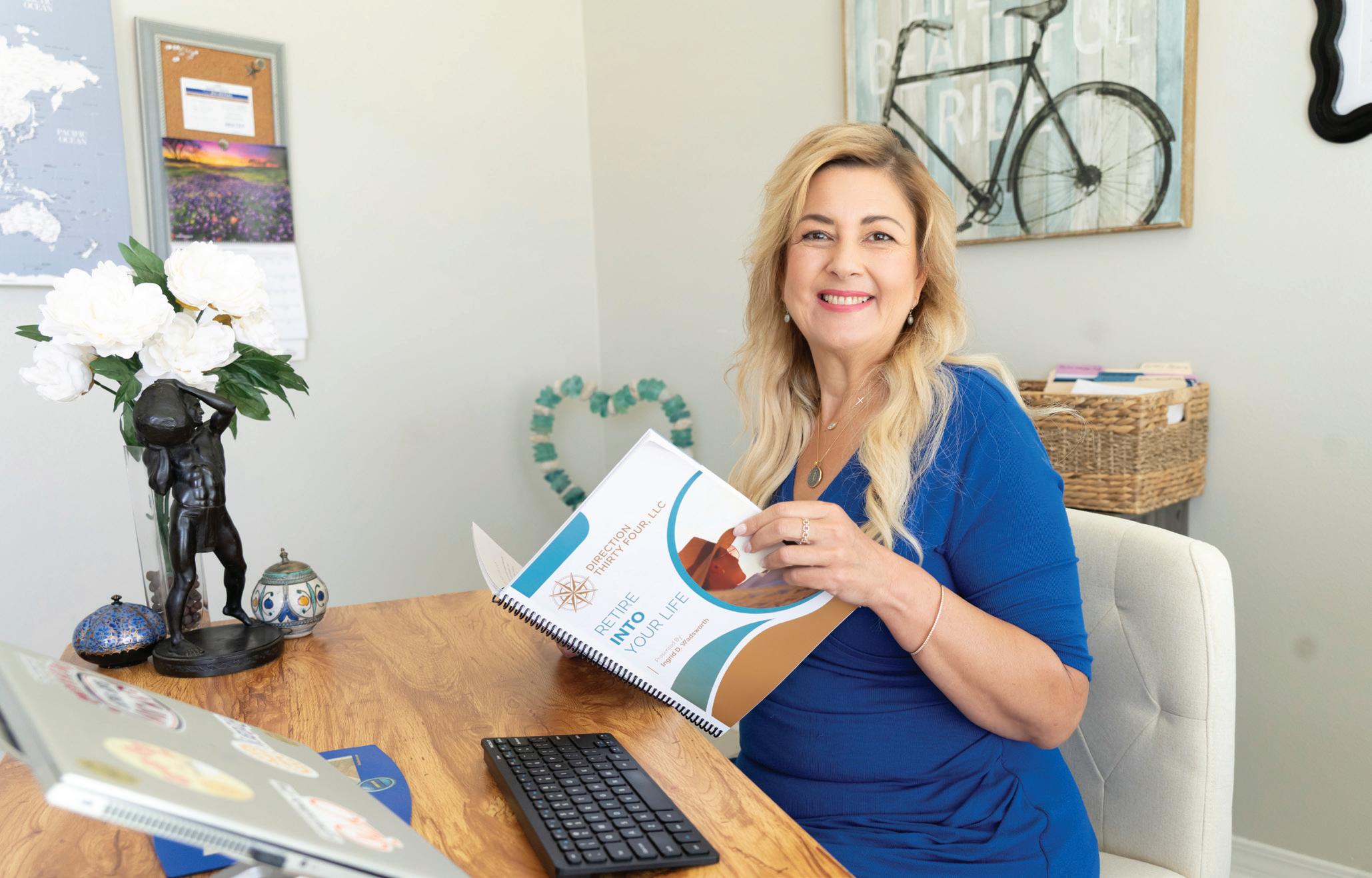


worth the trip






While standing at the foot of a hill trying to soak in the spectacular scene of millions of daffodils, their little, glowing yellow heads waving in the wind under a bluesky umbrella, amazement seized my mind, heart and soul.
And the overwhelming natural beauty set the tone for the late March day when my friend of 50 years, Molly Maher of Canton, Georgia, took me to Gibbs Gardens. My husband, Thomas, and I had stopped to see Molly and her husband, Chris, on our way back from a Blue Ridge Mountain retreat.
When Molly asked me one morning what I wanted to do, I said I wanted to get out and walk, perhaps see Gibbs Gardens. A generous hostess and avid walker, Molly was game, and the next thing I knew, we were on the road.
Gibbs Gardens, about one hour from Atlanta in Ball Ground, Georgia, opened in 2012 after decades of worldwide garden visits and research, planning and developing by James Gibbs — the retired president/founder of Gibbs Landscaping Co., one of Atlanta’s leading landscaping companies for more than 60 years. Gibbs, who believes in “gardening genes,” comes from a long line of gardeners.
What literally put the spotlight on Gibbs Gardens upon its grand opening was a six-page Southern Living Magazine spread complete with “glorious dramatic photography,” according to Gibbs. Southern Living’s senior gardening editor at the time,

Steve Bender, couldn’t praise Gibbs enough, causing a landslide of attention from other media and readers across the Southeast.
The magazine’s key point: Gibbs’ fields-of-dream-come-true project is a world-class destination.
The property of rolling hills, mature trees, natural flora and fauna, springs and streams, open land and view of Mount Oglethorpe covers more than 375 acres in northeast Cherokee County. Natural plants and trees aside, Gibbs designed 24 ponds, 19 waterfalls, 32 bridge crossings, plentiful winding pathways and many different gardens.
As soon as visitors enter Gibbs Gardens, vibrancy rules. Barrels, baskets, planters, pots and expansive serpentine planting beds burst with mixed brilliant colors of annuals and perennials, setting the scene for the orchestrated gardens.
Must-sees: daffodil gardens (Southern Living Magazine designated them “the largest display of daffodils this side of Holland”), Arbor Crest and Manor House gardens, Monet Water Lily gardens, Japanese gardens, Le Jardin Color Garden, the azalea garden, crape myrtle garden and daylily garden. Oh, and don’t miss Fern Dell; the 70 acres represent one of the largest fern groves in the United States.
To learn about the Gibbs family, manor home and gardens, garden rules, special events, visitor hours and what is blooming each season, visit the website, gibbsgardens.com. For instance, thousands of pansies and Japanese maples wow visitors in the fall, and Wildflower Meadow does the same in spring, summer and fall.
And, yes, Gibbs Gardens features a gift shop. During our visit, Molly bought me the best keepsake, the book “Gibbs Gardens, Reflections on a Gardening Life” by James Gibbs (BookLOGIX, $34.95).
Part of Gibbs’ sentimental journey speaks volumes:
“Passing down seeds and plants from generation to generation provides a kind of love that only a gardener understands. I’m sure my three children and 11 grandchildren will enjoy this garden for years to come as I hope the general public will enjoy visiting and viewing the legacy I leave behind.”
Final note: Plan to spend a minimum of two hours at Gibbs Gardens and wear comfy shoes. No worries, though. Its Arbor Café offers a variety of beverages and food, plus seating.

By

Ithink it is time to be honest. From busy schedules to emotional stress, or even just feeling disconnected from our bodies, it’s easy for that inner spark to slowly fizzle out. But what if reigniting your love life didn’t require lots of time? What if it started with small, simple changes that allow you to start reconnecting with your body in a major way?
As a pelvic floor physical therapist, I’ve spent many years helping women explore this very idea. Small shifts in how we move, breathe and care for our pelvic health can have a surprisingly big impact, not just on comfort or confidence, but on intimacy, pleasure and connection too. It is often shocking to many of my patients and clients how simply slowing down to do easy things can help, because of how big a lack of desire can feel.
This isn’t about fixing a broken body. Even though there may be underlying health conditions that may contribute to intimacy issues. Simply scratching the surface is all about waking up to what is already within you and gently giving it room to shine.
Let’s start with the basics. Your pelvic floor is a threelayered muscle hammock that starts at the base of your core and inserts at your tailbone. These muscles support your bladder, reproductive organs and bowels — and YES! Everyone has a pelvic floor: both men and women alike. The pelvic floor plays a vital role in posture, circulation, stability and sexual function.
When we talk about “lighting up” your love life or intimacy in general, we are truly talking about increasing body awareness, improving blood flow and minimizing tension in an area that is often either ignored or overworked.
You don’t have to be experiencing severe pelvic floor symptoms (i.e., pelvic pain, leakage, urgency, etc.) or have a diagnosed condition to benefit from pelvic floor care. If it were up to me, everyone would start caring for their pelvic floors earlier in life. You just need a desire to learn and feel more present, connected and curious about your body’s health and potential.
“I want to feel more connected to my partner.”
“Things just don’t feel the same anymore.”
“I’m not sure how to be confident in my body after all of the different changes in life.”
Many women I meet in the clinic tell me the same thing in different ways.
I want to be clear. This isn’t always about dysfunction. That often is the case, but only part of the problem. It’s often about disconnection. The truth is, we live in a culture that
doesn’t exactly teach us how to nurture our intimate selves. From how we talk about our bodies to how we care for or don’t care for our bodies, we are often a few steps behind simply because of what we have or haven’t been exposed to. We’re told how to look, how to please and how to perform, but rarely how to listen to our own bodies or even scientific truths about our bodies. I am excited that this is beginning to change slowly, but surely.
This is where pelvic health education comes in. It invites us to turn inward. To get curious instead of critical. To support the muscles and systems that allow us to feel, experience and express intimacy, whether that’s with a partner or in our own relationship with ourselves.
Let me share a story of many. Women in their 40s, 50s and 60s come to me feeling “off.” Not in pain, but not feeling “right.” Feeling emotionally flat and less connected in her relationship, that “kind of numb” feeling both mentally and physically took over intimacy in a way that was disappointing. We don’t
dive into big, dramatic interventions. We start with things like deep breathwork, pelvic posture awareness and pelvic mobility. All these things are really powerful, and many may be doing these things outside of a pelvic floor therapy clinic: at home, or even via video. However, learning how to incorporate relaxation into the pelvic floor daily and doing these types of movements consistently is where you see the changes. You have to make a routine that includes them as a part of daily life.
I think also finally having a safe place to discuss this private matter sets trapped feelings and negative energy free, which allows for a fresh start. It is extremely important not to suppress feelings like this, as the body will ultimately react.
After a few weeks, many of these women come back and say, “I don’t know what’s happening, but I feel more alive.”
That’s the power of subtle shifts. They change the way we feel in our bodies, and that changes everything else.
If you’re curious about how to reconnect with your body and spark

more intimacy, here are five gentle and effective ways to begin.
1. Breathe into your belly: Slow, diaphragmatic breathing helps relax your nervous system and improves circulation to your pelvic floor. Inhale slowly through your nose, letting your belly rise and fill. Exhale gently and feel your body relax. Do not allow any other area to hold tension, especially the glutes. Wiggle your toes, shake out your hands and repeat until you feel a sense of calm and less tension in the body overall. It may feel simple, but it is powerful!
2. Make room for movement: Stiffness in the hips and a tight lower back can affect how we feel during intimacy. Try hip circles, gentle yoga flows, or just a few minutes of pelvic stretching (i.e., butterfly stretch, piriformis stretch) each day to keep things more fluid.
3. Stay hydrated and nourished: Well-nourished parts of our body help maintain normal tissues, lubrication and blood flow. Hydration with minerals, whole foods and key nutrients, including magnesium, omega-3s and vitamin D, all help to support your energy and your pelvic health. Summer is upon us!

Drinking plenty of water and eating hydrating foods, such as watermelon, helps too.
4. Explore without expectation: Sometimes, the pressure to feel a certain way during intimacy can make us feel disconnected in return. Instead, try exploring what feels good without rushing to an end goal. Touch, warmth and playfulness can be deeply intimate, even without having an ultimate end goal in mind.
5. See a pelvic floor specialist, even if you’re not in pain: Pelvic floor therapy isn’t only for postpartum moms or women experiencing menopause. In fact, it’s for anyone who wants to feel more connected to their body. We work with women in their 20s, 40s, 60s and beyond. We can also refer you to other resources, such as a talk therapist, if that’s what’s called for. Everybody has a story. All of us have the right to feel at home in our own bodies.
AND POSSIBILITY
This is what I want any person, especially women, reading this to know.

You don’t have to wait until things are bad enough to ask for help.
You don’t have to check off a bunch of boxes of what culture deems the status quo in order to deserve pleasure.
You don’t have to become anyone besides who you already are to rediscover joy, straight from the inside







of your own skin.
No matter if you are a full-on glow or simply a quiet moment of flicker, your spark is still burning. And you are entitled to let it shine a little brighter. This summer, I wish you more curiosity, connection and things that light you up from the inside out.




Blue Angels Blue Angels
BROADCAST BROADCAST
JULY 12TH 10A-3:30PM Traffic Updates, Beach Updates & Commentary. Then when the Blues fly, listen to the Live Narration!


By Allison McCrory
Acentury ago, in 1925, Pensacola was on the move. Gulf Power and the Pensacola Country Club were forming. And a landmark like the town had never seen opened its doors on April 2 and forever changed the landscape and culture of downtown Pensacola.
Star-struck patrons flocked to the new crown jewel called the Saenger Theatre for silent movies and Vaudeville shows. An original Morton theatre pipe organ was the regal centerpiece of the Grand Dame of Palafox.
The majestic theater, on the National Register of Historic Places, boasts a story rich with nationally acclaimed performers as well as lifetimes of hometown memories. If walls could talk, they would recount tales of the best of the best as well as the heart of the Gulf Coast.
Lucille Ball, Bob Hope, Robin Williams and Mikhail Baryshnikov have graced the Saenger’s original wood stage. But so have thousands of little Pensacola girls in tutus, Pensacola Children’s Chorus singers and school band instrumentalists. The Pensacola Symphony Orchestra regularly transports listeners to other worlds; Pensacola Opera’s beautiful arias transcend the emotional spectrum from belly laughs to heart-wrenching tragedy; and Ballet Pensacola brings
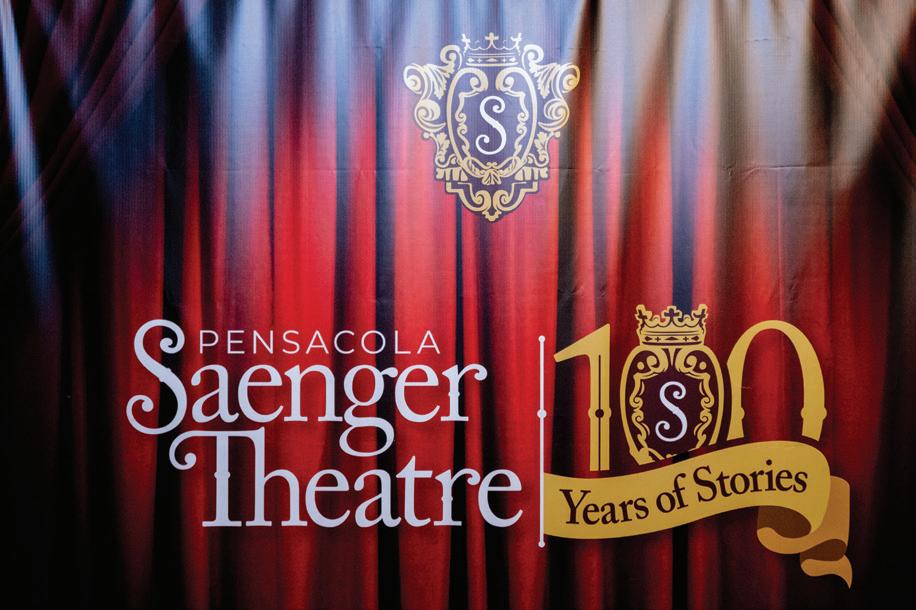


Alex Gartner, organist and director of the Pensacola Children’s Chorus, performed at the 100th anniversary celebration in May, playing along on the Saenger’s gorgeous organ with the silent movies that were screened for the event.


“I hope, besides the beauty of the theater, the Saenger teaches our children that there is a huge world out there with unlimited possibilities. You can’t ever dream too big.”
— Suzi Emerson
The Nutcracker to the iconic stage each holiday season.
When Suzi Emerson returned to her hometown in the mid-’90s, she and her husband discovered the offerings of the Saenger and have been fans ever since, eventually becoming season ticket holders.
“We have had season tickets for about 12 years,” said Emerson, who annually purchases four tickets in the front row and shares them with family and friends.
To Emerson, the Saenger is much more than a breathtaking downtown jewel.
“I hope, besides the beauty of the theater, the Saenger teaches our children that there is a huge world out there with unlimited possibilities. You can’t ever dream too big.”
Like all historic structures, the Saenger
needs attention and funding to maintain its beauty and viability. Enter Friends of the Saenger, who saved the Grand Dame from a proposed demolition in 1976. The collaboration of individuals, businesses and the University of West Florida worked in conjunction with the city to preserve the theater. The Duke Ellington Orchestra brought their magic to a 1981 grand reopening. The momentum continued with a 1995 addition of a spacious new lobby and a massive 2009 $15 million renovation restoring the theater’s original paint color and decor.
Now considered one of the best theaters in the country, the Saenger is still the first love of the group that saved it from destruction. Among Friends of the Saenger’s current missions: production equipment upgrades, restoration of the original pipe organ and advocating for arts and entertainment that maintain the Saenger’s status as premiere venue. It is work that does not go unnoticed by Saenger super fans.
“We are so lucky to have theater of this caliber in a city our size,” Emerson said.
• July 1: Ninja Kids LIVE ON STAGE: Infinite Possibilities
• July 18: Karlous Miller and Friends
• July 26: The Greatest Showcase 2025
• Aug. 1: Liverpool Legends: The Complete Beatles Experience
• Aug. 2: William Shatner Live On-Stage with Star Trek II: The Wrath of Khan
• Aug. 9: Devon Allman’s Blues Summit
• Aug. 16: Scott Bradlee’s Postmodern Jukebox — Magic & Moonlight Tour
• Aug. 22: The Bellamy Brothers: The Love Still Flows...
• Sept. 6: Steven Ho: Is it An Emergency?
• Sept. 14: RuPaul’s Drag Race Werq The World 2025
• Sept. 20: Danae Hays: The First Time Tour
• Sept. 23: Lake Street Dive with Trousdale
• Sept. 25: Not Dead Yet!John Cleese and the Holy Grail at 50
• Sept. 27: Chris D’Elia: Straight Out of the Multiverse






In honor of National Child Abuse Prevention Month, Gulf Coast Kids House hosted its annual Blue Gala on April 30. Held at the Culinary Productions event venue, the cocktail-style fundraiser was filled with warmth, purpose and a deep sense of unity. Guests arrived dressed in blue, ready to show their support for the vital work GCKH does to protect and advocate for vulnerable children in Escambia County. The evening featured live music, curated bites, flowing drinks and a heartfelt program that included a fund-a-need segment and the unveiling of a special initiative focused on expanding essential therapy services. Every smile, toast and candid moment told the story of a community rallying together for its children.
Photos by Toni Sparks / Short Story Studios





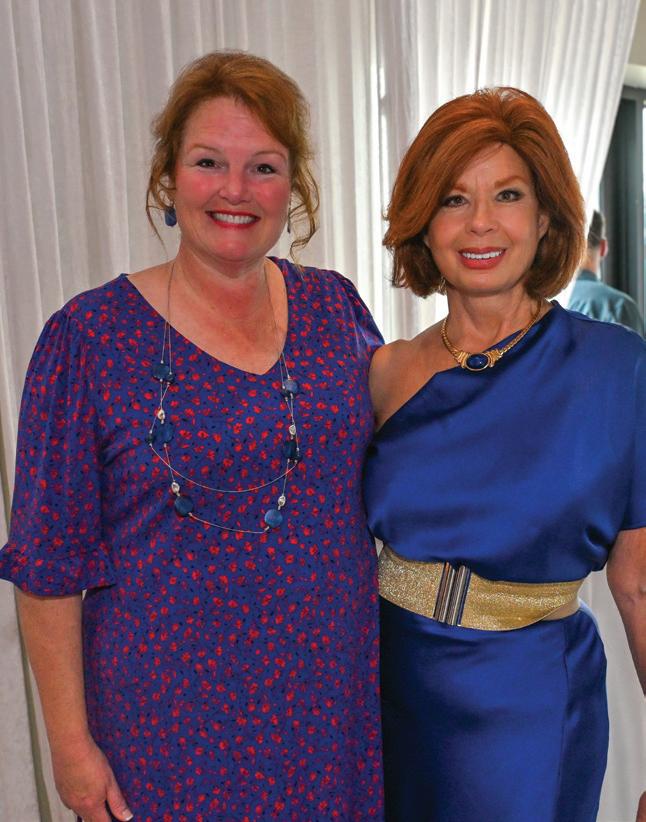


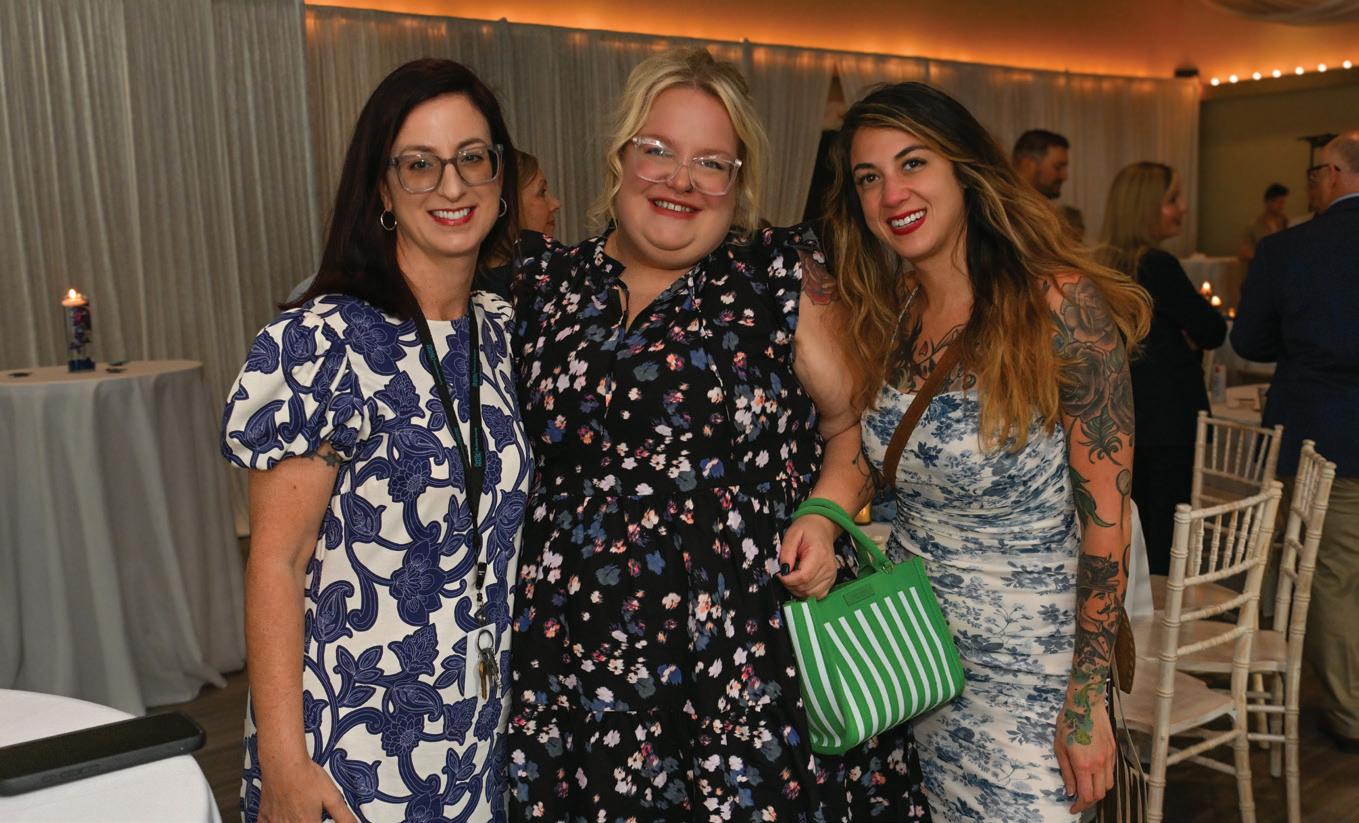


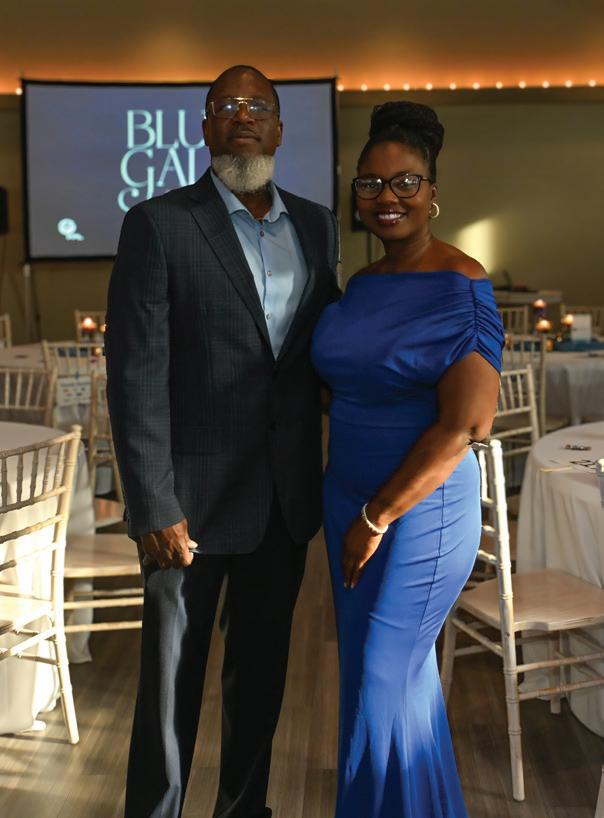

The thrill of the track met the elegance of a gala at this year’s Glitz & Gallop, held on May 3 at Culinary Productions Event Venue. Presented by HCA Florida West Hospital, this annual Kentucky Derby-inspired celebration brought the thrill of the races to downtown Pensacola. The event supported United Way of West Florida, raising funds for its Community Investment Process. Guests came dressed to impress and ready to cheer on the Kentucky Derby, broadcast live during the event. From handcrafted cocktails and gourmet hors d’oeuvres to a high-spirited silent auction and themed games, the evening was packed with excitement and generosity. Prizes were won, bets were placed, and the crowd erupted as horses crossed the finish line — Derby spirit in full swing!
Photos by Toni Sparks / Short Story Studios


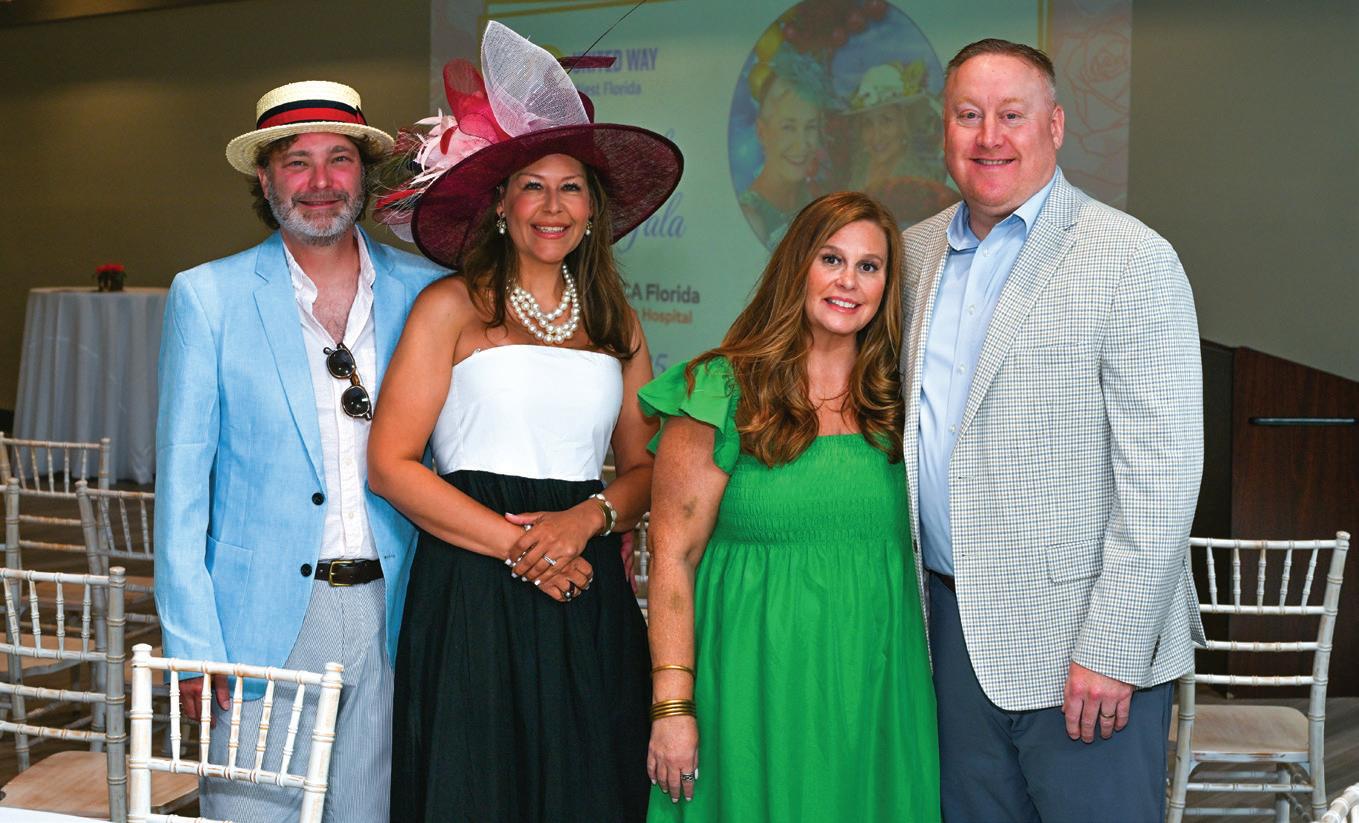



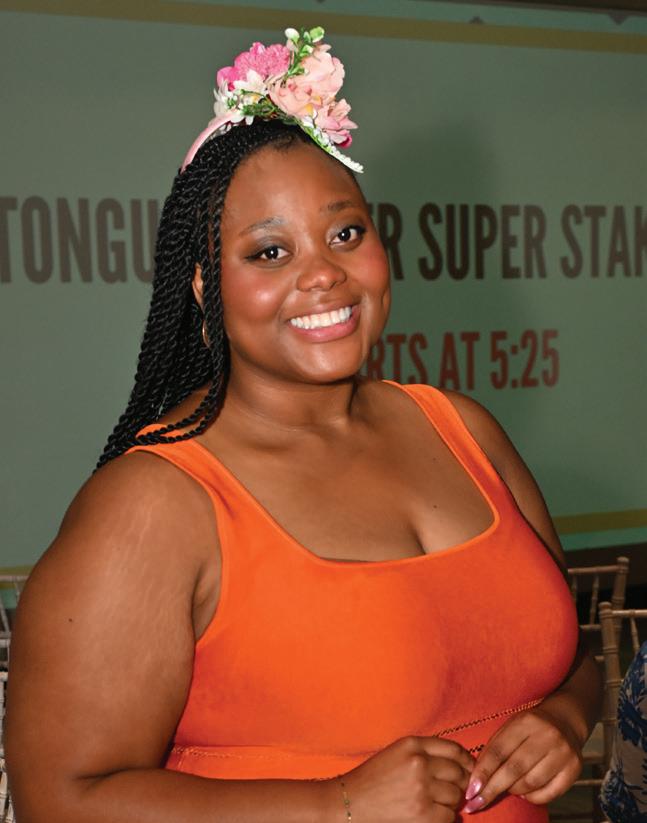

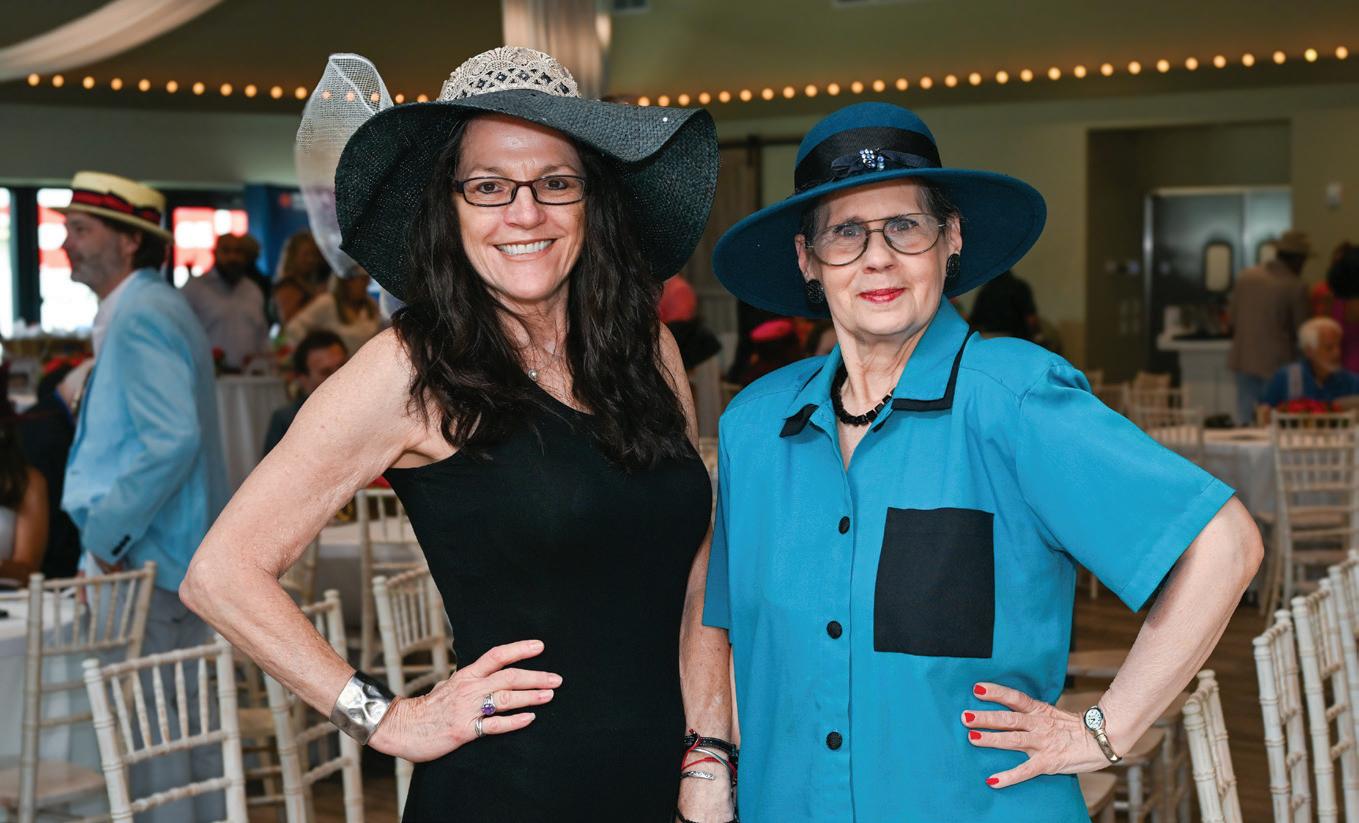

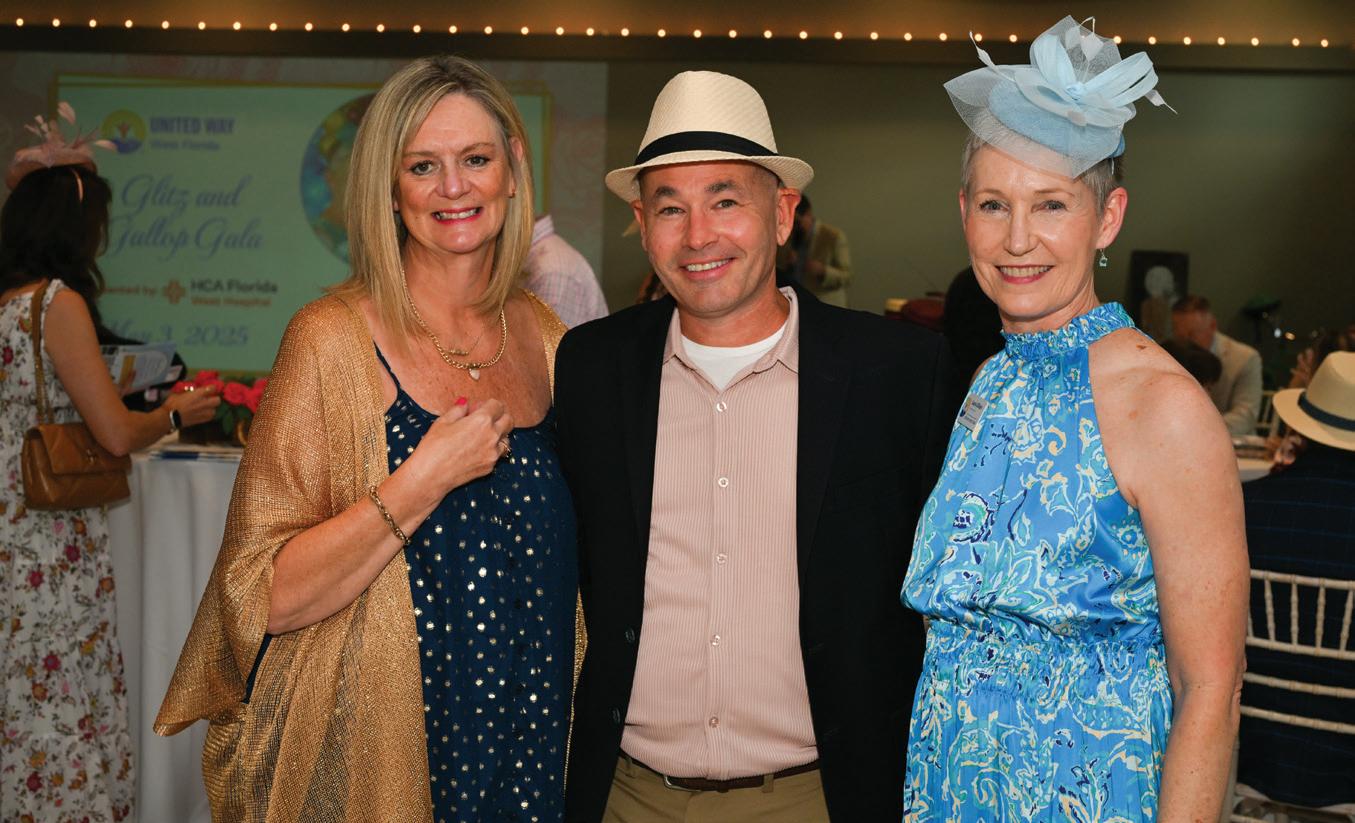


Guests gathered on May 4 at Portofino Island Resort to celebrate two decades of compassion, community and commitment at the 20th annual Soundside Splendor. This beloved Pensacola tradition brought together generous supporters, top local chefs and dedicated volunteers for an unforgettable day filled with gourmet food, refreshing drinks, live entertainment and heartfelt purpose — all to benefit the Children’s Home Society of Florida. Presented by the Sansing Family and honoring Abbie and Nels Offerdahl in loving memory of Ashley Offerdahl, this year’s event was both heartfelt and impactful. Proceeds from the event will help fund critical services such as mental health support, parenting programs and early childhood education, ensuring local children have the chance to thrive.











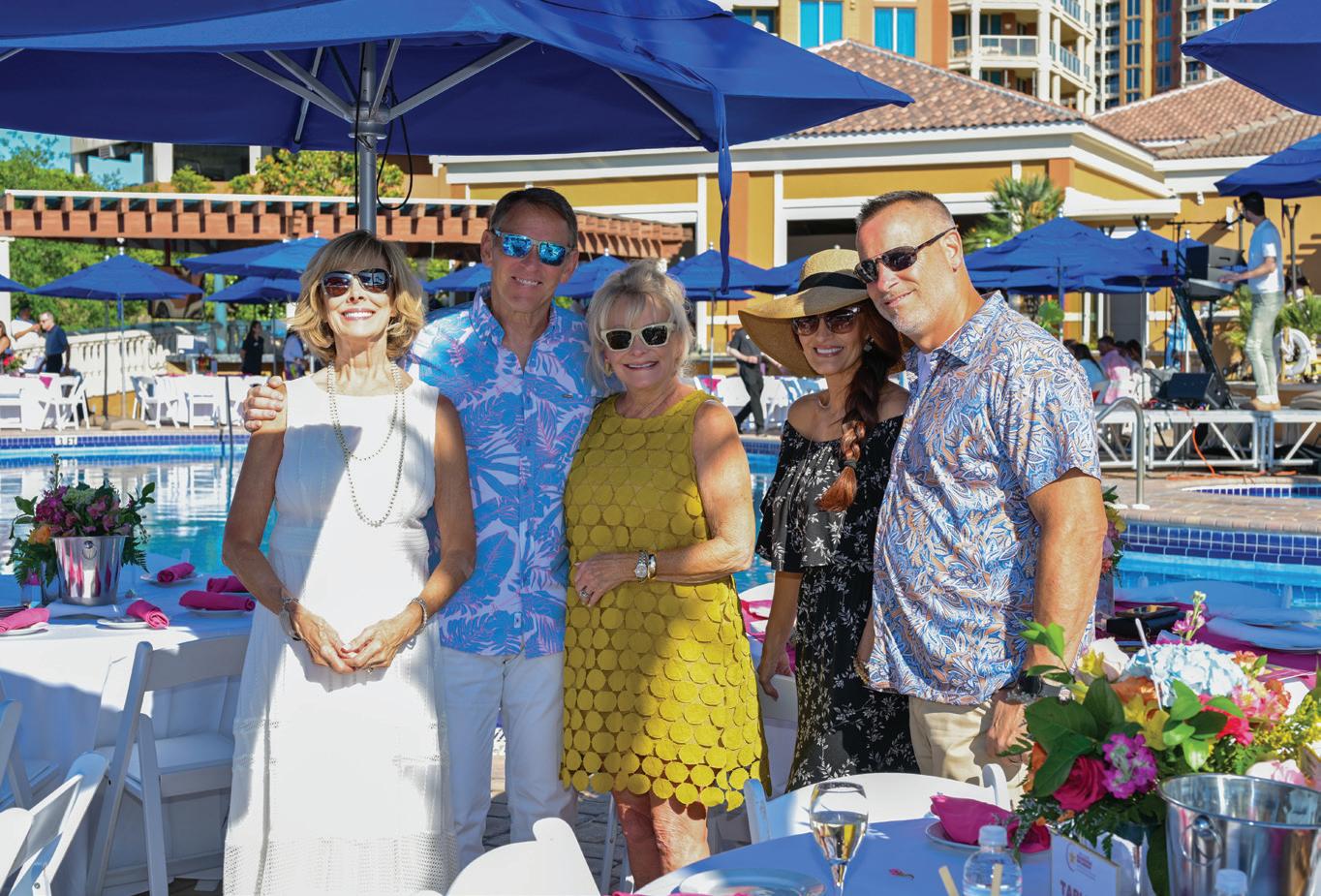

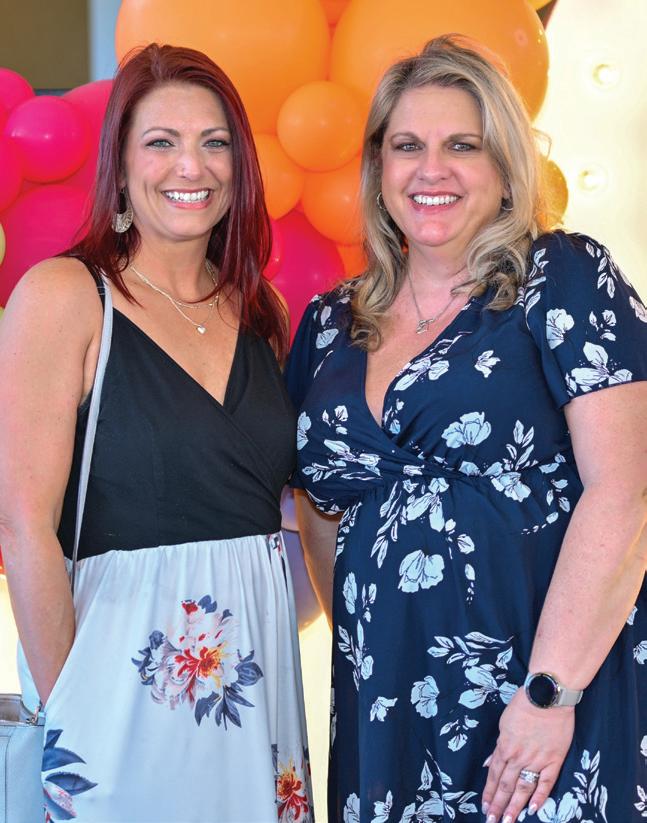





By Sharla Gorder
Mercury is in retrograde. That is my excuse — well, one of them. My new favorite. That’s why I’m feeling so negative and cranky.
Apparently, Mercury began to move backward in the heavens this week, foreboding bad mojo because it goes against the planet’s natural movements. That’s what astrologists say.
Astronomists, however, have a different explanation. Since Mercury is so much closer to the sun than we are, its orbital speed is faster, circling the sun in a mere 88 days. Its path is also more elliptical. So, a couple of times a year, Mercury laps us here on Earth, and creates an optical illusion, kind of like a car passing a slower-moving car on I-10. It appears, for a moment, that the faster-moving car is backing away. But the truth is — the car is not reversing on the interstate, and Mercury isn’t hurtling backward through the cosmos. It’s just a matter of perspective, the way I see it.
Hmm. It’s only my perspective. Back to that. Dang! My brand-new best excuse for being in a lousy mood, confuted by science.
But this is good news. Changing the way I see things seems far less daunting a task than trying to get a planet to behave. I’ve actually devised a system. It may seem a little hokey, but I swear, it works for me.
ridiculous business meeting, or during that tense family gathering.) What went right? Something always went right. I write it down.
The second question is this: Who was a blessing to me yesterday? (Or this morning at the gym, or at my own dinner table last night?) Who contributed to my life in a positive way? Again, I can always think of someone who has encouraged me or embraced me in some way.
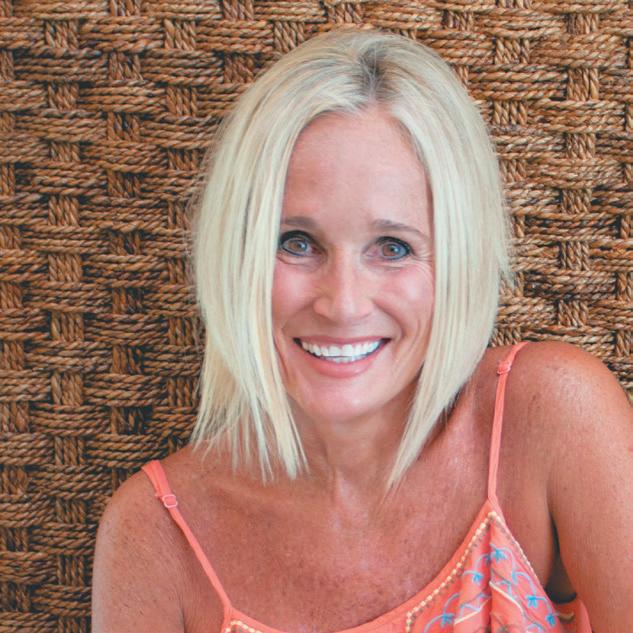
First, I have to accept the science — or in this case, the psychology — that the way I perceive things when I’m in a foul mood is never the whole story — and often not even a true story. Mercury is not flaunting the laws of physics. I am not fated to have a “bad” day.
With that established, I then ask myself three questions; I usually write down my answers.
What went right yesterday? (Or last week or at that
And the third, and most challenging question is this: How did I shine? Of course, when I’m feeling like Eeyore, it’s hard to appreciate myself, but there is never a day when I completely suck at life. I love the old gag — “I’m not a complete failure; some parts are missing.” I write down that missing piece.
As it turns out, yesterday wasn’t a terrible, horrible, no-good day. It was a really good one, when looked at through a different lens. I didn’t even have to think too hard to get Mercury back in line.
What went right yesterday? My dear friend’s cancer scans came back clean as a whistle.
Who was a blessing to me? A person I didn’t even know approached me at Publix to tell me how much her elderly father is enjoying my newest book.
How did I shine? I remained kind when treated harshly. I didn’t lash out. I actually wrote a little sign and taped it to my monitor, “High Road. Take it.” And I did.
I didn’t have time to wait two weeks for Mercury to resume its prograde motion through my night sky so that I could relax. Though clearly, I’m not an astronomer or physicist, I find that I don’t have to understand all the mysteries of the cosmos to have faith in the stars.
Bella Magazine is teaming up with Sonshine’s Corner to bring you the most inspirational show on the Gulf Coast — and you’re invited!
Join us live at 9 a.m. on the first Tuesday of every month on WPAN-TV / BLAB-TV for Talk About It Tuesday — a powerful, uplifting hour featuring Bella’s finest: beautiful women, bold voices, smart conversations, and stories that empower, inspire, and uplift.
From Escambia to Santa Rosa, we’re changing the conversation and celebrating the confidence, culture, and community that make us shine. So grab your coffee, tell a friend, and tune in.
Sonshine’s Corner + Bella Magazine — where sass meets substance.


The place to be inspired,informed & uplifted
By Liz Biggs
Recently, I got some bad news, and I have been a Mopey Molly. A Woe-is-me Wanda listening to “Heaven Knows I’m Miserable Now” by The Smiths. After following doctor’s orders since my Mardi Gras dance floor injury, my broken fingertip is still dangling by a thread of a bone and refuses to heal. A bone graft is my only option to regain full use of my right hand.
I did everything I could to avoid being a Surgery Susan. This will be my 14th surgery, and I’ve hated every one of them. Not a single one was elective or cosmetic — it would be fun to wake up with bigger boobs or a tighter face, but my surgeries have enabled me to breathe, walk or stay alive. I was born with a defective lung, and trust me when I say that recovering from major lung surgery is the worst. Days are long when every breath you take is excruciatingly painful; I’m glad I was 20 and handled the six-month recovery like a champ. So yeah, a finger bone graft is no big deal. I’m mostly sad my body let me down and didn’t cooperate in the healing process. So lame.

But an Instagram post from my daughter inspired me to be a Positive Polly. “I love you, Mom, you are the biggest light in my life,” she posted. That’s pretty much the best compliment I’ve ever heard, but now I have to live up to it! I need to look at the glass half full, not half empty. What if my finger wasn’t fixable and I had to live the rest of my life with pain every time I use my right hand? I should be thankful for modern medicine and good surgeons who have the knowledge and skills to make my life better. I should be thankful that I have the option of using a cadaver (allograft) because my bones are not trustworthy. The Hopeful Holly in me hopes my donor drank a lot of milk. Maybe he was a football player, hopefully a quarterback. I should drink more milk. Maybe I shouldn’t donate my organs or bones — I’d hate to be a letdown for someone who needs strong bones or body parts that work properly. My bones would be labeled
Another Positive Polly revelation is you get good drugs when you have surgery. My favorite drug these days is Advil — I haven’t had super fun drugs since the 80s. Well, except for that Scopolamine and Zofran I recently took on the ferry from Athens to Santorini. Suffering from severe motion sickness since I was a child, I was required to have a bucket in my lap every time I got in the station wagon with my family so I didn’t throw up on my clothes. I have filled countless barf bags on turbulent airplanes. One exasperated flight attendant handed me a Hefty bag because what can you do with full barf bags — hand them to the passenger next to you while you fill another? Don’t even ask me about boat barfing.
The 5-hour high-speed ferry was supposed to be a nice way to experience the Greek Islands between Athens and Santorini. But the winds were gusting at 40 mph, and the swells in the Aegean Sea were 8-10 feet, so it took 7 hours. The ferry attendant handed out fancy foil-lined barf bags to all passengers (way better than the wax-lined ones I’m used to on airplanes). The lady next to me was moaning and barfing, so I snuck out of my assigned seat to a window seat to watch the waves. The boat was rocking so wildly that the window dipped down almost touching the surface of the water and then rose up to the sky. I asked the Greek dude next to me if we were going to die, and he said probably not since this was the new, more stable ferry. I didn’t ask what happened to the old, less stable one.
But thanks to these new, magical anti-nausea drugs that my siblings insisted I bring, guess who didn’t feel sick at all? It felt kind of groovy to be on that rocking boat, humming “I Wanna Be Sedated” by the Ramones, feeling safe because the stranger next to me said we wouldn’t die. Why be a Negative Nancy over things you can’t control or change? Negative Nancy is exhausting. I’m going to try very hard to be a Lit-up Liz from now on.

